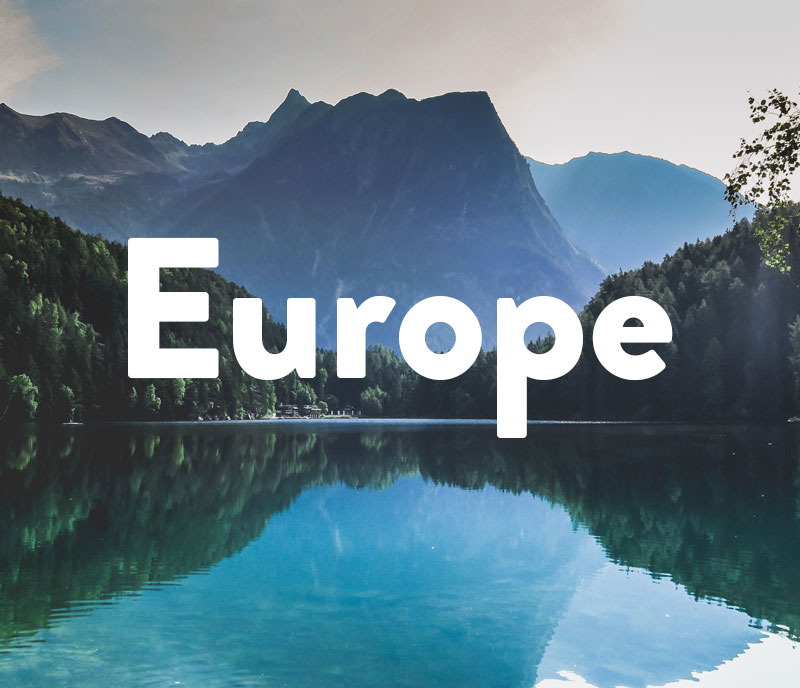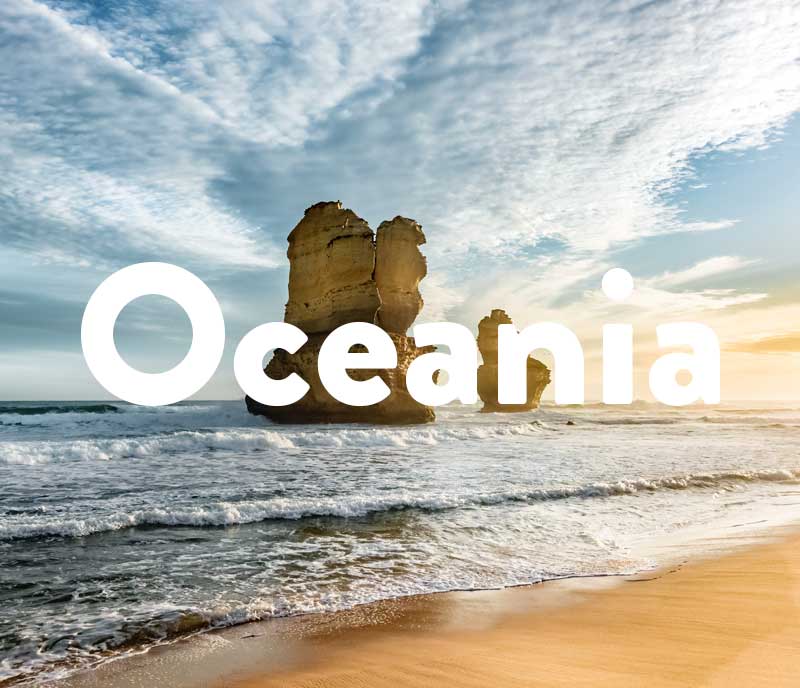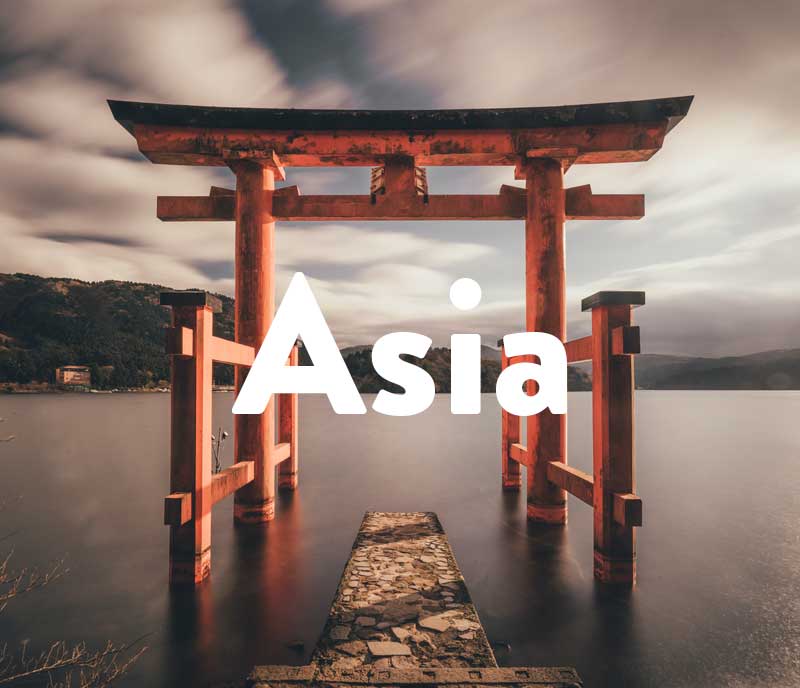What’s it to be? A beach vacation on the Indian ocean or a safari in the African Savannah? You can do either in Kenya.
Seeing the Big Five in one of the many national parks, right up close, is a feeling like no other. Relaxing in a beach resort might well bring you the energy to get ready for the magnificence of the safari. And a short visit to the capital Nairobi should absolutely be part of your plan. A ride in the – often jam packed – minibus is one of the best ways to experience the big city vibe here.
Dive into our (free) travel guides below!
.
.
.
.
.
.
.
.
The Key Info
The Republic of Kenya is located in East Africa. The country borders Ethiopia in the north, Somalia in the northeast, South Sudan in the northwest, Tanzania in the south and Uganda in the west. The Indian Ocean is found to the southeast.
Occupying 580,367 km², Kenya is a fairly medium-sized state on the African continent. Around 53.5 million people live in the country. Kenya is not as densely populated as, for example, Germany, where over 80 million people live in a much smaller area.
The capital, Nairobi, is also the economic center of the country and has an extremely pleasant climate with an average of 20 degrees. It is basically warm in Kenya all year round, and the almost non-existent seasonal temperature fluctuations come in the form of rainy and dry seasons.
Kenya’s vegetation is varied. In areas with high rainfall, rainforest and wet savannah cover the land. A large part of the highlands consists of dry savannah and thorn bush savannah. In the far north, you’ll encounter semi-deserts instead.
Next to Swahili, English is the main language, so you should be able to communicate easily in large parts of the country.
Kenya in Numbers
- Population: 53.52 million
- Total size of the country: 580,367 km²
- Capital city: Nairobi
- Currency: Kenia-Schilling (KES)
- Official languages: Swahili and English
- Religion: Christian (82.6%), Muslim (11.1%), Atheist/Agnostic (2.4%) Traditional (1.6%), Hindu (0.1%)
The 5 Largest Cities in Kenya
#1 Nairobi
Nairobi has around 4.3 million inhabitants and is located between Lake Victoria and the Indian Ocean in the southern center of the country. Although the city has everything that you’d generally associate with a metropolis (skyscrapers, pumping traffic, hustle and bustle), you can immerse yourself in Kenya’s wildlife not far from there. Giraffes, rhinos, lions and many more African animals live in Nairobi National Park, just 7 km from the city center. From the park you can see the skyline of the big city, which makes for an incredible (almost unreal) picture.
#2 Mombasa
The highlight of Mombasa are its white sandy beaches. The 1.2 million inhabitants live very close to the tropical dream that thousands choose as their holiday destination every year. The resorts of Diani, Nyali and Bamburi Beach will spoil you with fresh coconut as you sit on the palm-fringed beach, deciding whether you’d rather swim, dive or surf.
In the city itself, a visit to the Arabic and Portuguese influenced old town (“Old Town”) is really worth it!
#3 Kisumu
Kisumu is located on the shores of Lake Victoria, the largest lake in Africa. The city has gained popularity in recent years as the hometown of Barack Obama’s father. Around 90% of the 721,000 inhabitants belong to the Luo ethnic group, of which Obama is descended. The Kisumu Museum gives an insight into the culture of the Luo.
#4 Nakuru
Kenya’s fourth largest city, Nakuru, has just over half a million inhabitants (570,600). It is located on Lake Nakuru at an altitude of around 1860 meters. The lake is famous for its flamingos, and you can spot them from afar as pink stripes that run around the whole lake. Up to two million flamingos feed on algae and small crustaceans here. The latter is what gives the otherwise white flamingos their pink color. The lake is a UNESCO World Heritage Site.
#5 Eldoret
Eldoret, located in the southwestern part of Kenya, is not exactly a city with tourist attractions. They are mainly known because of the many top long-distance runners that the city simply keeps producing. In the local training center, top runners picked from the 475,000 residents train at an altitude of 2100 m.
TOP Tourist Attractions
# 1 Kenyan wildlife in the Masai Mara
Kenya is famous for its abundant wildlife. Perhaps the most animal-rich nature reserve is the Masai Mara, a 1510 km² savanna area on the border with Tanzania. It is home to elephants, leopards and zebras. Wildebeest, gazelles and antelopes are around according to the dry and rainy seasons and move in herds through the Masai Mara between September and November – a truly unique experience.
#2 Malindi Marine National Park
This park is how some imagine paradise to be: Wide, white, gently sloping beaches and turquoise blue water reaches as far as the eye can see. The underwater world in the Malindi Sea National Park completes this beauty. During dives, snorkeling trips or from a glass bottom boat you can see fascinating coral reefs and colorful fish in the world below.
#3 Mount Kenya Massif
Snow in Africa. Yes, that really happens. On the highest peak of the Mount Kenya massif, the Batian (5199 m), you’ll find ice all year round. But it’s not just the mountain range (UNESCO World Heritage Site) that makes the landscape in the area so attractive. In Mount Kenya National Park you can go hiking, witness beautiful reflections in mountain lakes and observe animals in their natural habitat. No doubt – nature lovers get their money’s worth here.
#4 Lamu Island Old Town
The Swahili culture developed over the years from the centuries-old trade between Arabia and India and the African coast. And Lamu is one of the few places where old structures from this culture have been preserved. The houses mostly consist of coral stone blocks, the doors are masterfully carved. In the old town you can stroll and indulge in exotic impressions.
#5 Massai Culture
With their bright clothes and semi-nomadic way of life, the Maasai are probably the best-known ethnic group in East Africa. Notorious warriors and cattle herders, they have kept their ancient ceremonies since time immemorial. The men’s jump dance, in which they jump as high as possible on the spot, is very well known. Whenever you have the opportunity in Kenya to visit a Maasai village and learn about their fascinating way of life, take advantage of it!
Best time to visit
It is best to travel between December and mid-March during the dry season. This also happens to be the main season here, so those wanting to avoid it can find similarly good travel conditions from June to October. The temperatures are pleasant in both periods, the probability of rain low. The time between June and October is also ideal for wildlife observation, since that’s when the great animal migration takes place in the Masai Mara.
Safety for travelers
Nairobi is not exactly the safest city in the world. You should be particularly careful here. There is a risk of falling victim to (armed) robberies and con artists. Scammers like to pretend to be police officers or spy on their victims before an attack. Certain neighborhoods such as Eastleigh, Pangani and the slum areas are particularly dangerous. Drivers in Kenya should stay aware of the risk of carjacking.
Walks on the beach after dark are not advisable.
In the Somalia border area there are occasional riots, so you should only visit this area (including Lamu Island) if you have been given the go-ahead.
Members of the LGBTQ should be cautious in public. Kenyan criminal law makes homosexual acts a criminal offense, though this is rarely enforced. In Nairobi as well as on the coast, you’re likely to encounter liberal attitudes.
The Most Important Holidays in Kenya
- January 1st: New Year
- Variable Friday in March / April: Good Friday
- Variable Monday in March / April: Easter Monday
- May 1st: Labor Day
- Variable date (depends on lunar cycle): Eid al-Fitr (Islamic Day of Breaking the Fast)
- June 1st: Madaraka Day
- Variable date: Eid al-Adha (Islamic Festival of Sacrifice)
- October 20: Mashujaa Day
- December 12: Independence Day
- December 25th: Christmas
- December 26th: Second day of Christmas
Visa for Kenya
You need a visa to enter Kenya. You can apply for the visa in advance online (at www.ecitizen.go.ke) or receive it directly at the airport upon arrival. Be aware that the visa may have to be paid in cash in either euros or US dollars. It currently costs around 40 euros or 50 USD.
Currency
In Kenya, the Kenyan shilling (KES) is used to pay. You can usually withdraw cash up to a maximum of KES 40,000 at ATMs with European credit cards or internationally recognized bank cards.
Common credit cards such as VISA or MasterCard can be used in hotels, restaurants and national parks in tourist areas. However, in everyday Kenyan life, cash remains the number one means of payment.
It is helpful to have US dollars with you as this is often the currency “on the street”.
DOs and DON’Ts in Kenya
| Do | Don’t |
| Always have a handkerchief or a small towel with you. This comes in handy in many situations, such as wiping dust or sweat off your forehead, or using it in toilets where there is nothing but water to clean your hands. | Do not use plastic bags (and do not bring any with you in your luggage). There has been a ban on plastic bags since 2017 and even possession is a criminal offense! |
| Handle Kenyan banknotes carefully. Since portraits of the presidents are printed on it, the corruption of the currency is a punishable offence. | Do not take photos of military installations, government buildings or anything else that could be considered security-related. |
| Ride Matatu! It’s a unique experience. | Don’t smoke in public without knowing if it’s allowed. Smoking in public areas is largely prohibited, but there are certain “smoking areas”. |
| Always have a few US dollars with you. |
Pack List Must-Haves
- Vaccination certificate
- Cash in US dollars
- Contact details of the contact person at your accommodation
- Long pants and tops (as mosquito protection)
- Earth-colored clothing for possible safaris
- Swimwear
- Headlamp with sufficient battery
- Sun protection (sun hat, sunglasses and sun cream)
- Mosquito-repellant spray
- Socket adapter
- Binoculars
- Plasters and disinfectant
- Important personal medication
Secret Tips from Bloggers
- The Wanderlust recommends going upwards! Mount Kenya is Africa’s second highest mountain and enjoys less crowds than Kilimanjaro.
- Take a trip to Kenya’s smallest national park – Saiwa Swamp National Park, says the Culture Trip. Quite apart from its beauty and interesting trees, it’s also home to a really rare aquatic antelope called the Sitatunga Antelope
- Know your stereotypes and change them to be respectful of local culture. Fisayo Olayinka-Bello explains what you need to know about Africa.
TOP 7 Instagrammable Places
- #masaimara (505,210 posts)
- #giraffemanor (58,586 posts)
- #mountkenya (20,013 posts)
- #sheldrickwildlifetrust (6,362 posts)
- #chyuluhills (4,465 posts)
- #karenblixenmuseum (2,384 posts)
- #mombasatusks (224 posts)
Did you know? – Fun Facts about Kenya
… that the word “Chai” translates as “tea” in Swahili? So when you order a Chai team, you’re actually ordering a tea-tea. (Source:
…that there’s more than 40 different ethnic groups in Kenya speaking more than 50 different languages between them.… that locals prefer tea to coffee, despite coffee being the main export of their country.
Read our latest posts…
- Your ultimate guide to hiking
- Dresden and Saxon Switzerland – The perfect weekend trip
- Vacation in Carinthia: Experience the sunny side of the Austrian Alps
- Craft Unforgettable Postcards: Say Goodbye to Writer’s Block with AI (Coming soon!)
- Discovering the Charm of San Antonio: 5 Hidden Must-Visit Places







